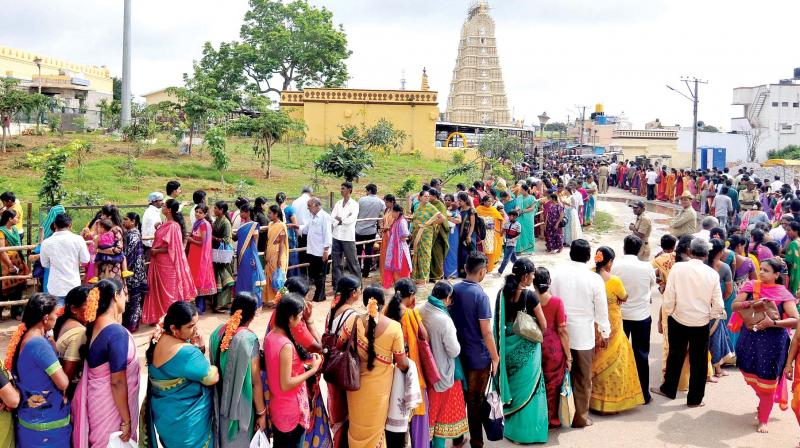By Tanya Mittal

We Indians are used to waiting in long queues. From buying a first day – first show Rajnikanth movie ticket to waiting at the Tatkal office or even school admissions, have the longest queues of people. The queues outside temples especially intrigue me because they always seem never-ending. This just makes us realise how spirituality and religious worship is so entrenched into the very core of our Indian culture. As a popular Hindu belief, God has indeed created a lot many of us, but we have created an equally huge number of idols of the 3 million Hindu deities we worship.
A myriad of customs and pujas means that temples in India have visitors all-round the year. People are especially pouring in around festive seasons with their kids and families. In fact, according to a study by Lokniti in 2008, Religious places were ranked the highest in preferred tourist destinations for Indians, which found that 39% of the respondents reported pilgrimages/holy sites as their most preferred location for a vacation.
So imagine yourself visiting a jam packed Haldirams on a Friday evening along with your entire family. Similar is the situation in these religious hotspots as pilgrimages are often a family affair. Airlines and travel booking sites actually advertise bumper offers or lower their prices especially during a peak religious season. In fact, most people are willing to shell out money on advance bookings and often buy “Darshan essentials” like Prasad, Incense sticks, Flowers just to avoid the long hours of waiting.
So anyone able to pay extra would be allowed to get into a ‘fast track’ queue in a temple for a VIP darshan, while those capable of shelling out even more would be in a ‘superfast queue’ for a VVIP darshan.

I would like to share an excerpt from this eye-opening article covered in the Times Of India (TOI), reported on 20th July 2019
“VIP privileges, which are offered by some holy shrines, often in lieu of a fee or donations, can be easily misused. As a racket at Tirupati last year revealed, VIP darshan tickets, priced at Rs 500, were being sold in the black market for Rs 10,000. Apart from the sighting of the god, the package included two laddus from the holy prasadam.”
The rest of the article explored how the Tirupati Website lists down the privileges accorded to donors against suitable rates which include the special treatment for those who can give some extra money. From family darshans to deluxe darshans, reading this made me realise that this is just a huge scam to fleece money and the sanctum sanctorum in this country are making a huge profit out of India’s love for its gods.
We say with pride that God has created us all equal, so who are we to drive a wedge amongst the devotees who are desirous to visit the temples and shrines based on the tags of a VIP? Now is it our class/birth/category/caste that will decide whether we can pay our obeisance to the Almighty?

Most religious events and temples are specifically vulnerable as a majority of them are located on hills, riverbanks, and the like, where the uneven terrain is already a risk to pilgrims.
People travel long distances and endure long lines just to spend time with their God but instead, they are pushed around in lines. Therefore this should be granted to them by better management of queues instead of having separate lines for VIPs.
It’s known that religious gatherings especially in Amarnath, Shirdi, Varanasi or the Kumbh Mela are prone to stampedes mainly due to crowd mismanagement and this needs a multi-stakeholder approach involving various think tanks to come up with better solutions for crowd control as it is a pressing issue today.
Tanya Mittal, a writer at Itisaras is currently pursuing her undergraduate degree in History from Lady Shri Ram College, University of Delhi. Belonging to an armed forces family, she has had an opportunity to appreciate the vibrancy that India offers. She is an avid reader and wishes to pursue a career in International Relations.

